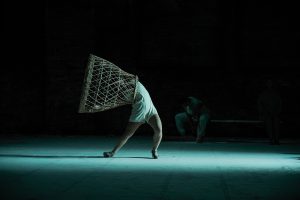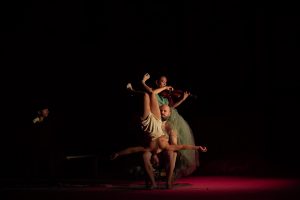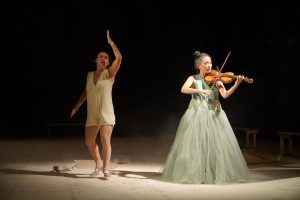His is a body in constant transformation, capable of a physical and visual metamorphosis that opens up to a visionary, bizarre, carnal imagery that intertwines art and life, sacred and profane, tradition and modernity. Just awarded the Silver Lion at the Venice Biennale Danza 2022, Rocío Molina, bailaora and Spanish choreographer, she is an iconoclastic artist for her characteristic of breaking with the flamenco tradition and, respecting its essence without sacrificing its purity, returning to it renewing it. She pushes the boundaries of her in the contemporary world of dance, experimenting with new limits. Technical virtuosity and research arise from a daring, risky, radical creative freedom, from a thought in motion moved by improvisations and explorations of the body and mind that unite and draw on different disciplines – dance, theater, music -, to cultural worlds that recall literature, cinema, painting, philosophy. We find free quotes to all this in the new show Carnación (world premiere at the Biennale Danza), “a battle between his volcanic body and five live musicians”, in the words of director Wayne McGregor.
The mercurial dancer shows up in a fluffy pink tulle dress climbing up and up several times on the back of a chair, seeking a balance with skewed positions, slips and falls. Next to her, seated motionless, the singer Paco “Niño de Elche” with whom Molina will initially engage in a physical and gestural body-to-body, handling a long rope that will tie in all parts of the body, from feet to mouth, until it touches suffering. . From this scene of submission that will then see him untie and intone a mute song with a guitar, various sequences follow aimed at exploring – according to Molina’s intentions – “a search around desire as a psychic flow that directs the drive towards the flesh and that starts from the intuition that its origin can only be found in illo tempore ”. Here is the man accompanying the woman in the clothing of a pope; inveigh against her between one dance and another; welcome her in her arms as in a sacred Deposition; drag it with a veil on the dusty earth of the stage; hit each other while remaining frontal and immobile, then dance away; hitting and hugging each other tightly; climb onto each other’s shoulders. Around this relationship of distance and closeness, of care and possession, of vehemence and tenderness, of attraction and aversion, a choir moves, led by the soprano Olalla Alemán, who takes on procession and arena gaits while singing pieces from the Stabat Mater by Pergolesi contaminated by percussive sounds.

And in the meantime, between silences and energetic dance accelerations, we see her undressing, changing clothes, dancing hitting herself with her arms and hands, beating her heels to the rhythm of flamenco introducing new forms, duetting a furious dance on the baroque notes of the violinist Maureen Choi, self-inflict punishment with a slow bondage ritual.

Suddenly – and we don’t understand why – a change of musical register breaks with techno music and everyone’s wild dance. If we admire a series of paintings for their subversive and captivating beauty, for the energy of the dancer and the evocative power of her expressive skills that combine feelings of pain, fragility, penance, ecstasy, and spirituality, the progress of the (too) long performance with many endings, and the superabundance of overlapping sequences, makes us lose that phatos that manages to seduce us in several moments.

